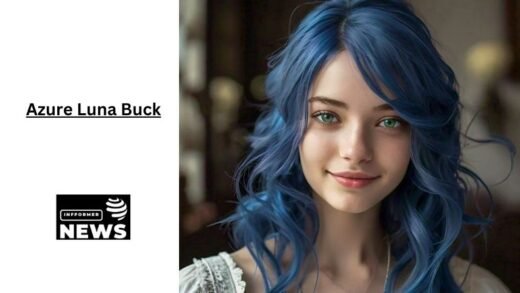Halo (2003): Game Icons and Banners – A Visual Legacy
The release of “Halo: Combat Evolved” in 2001 marked the beginning of a gaming phenomenon that would shape the first-person shooter genre for years to come. Two years later, “Halo” solidified its legacy, becoming more than just a game but a cultural icon. As part of this legacy, the game’s visual elements—especially its icons and banners—have played a crucial role in the franchise’s identity. In this article, we will explore the significance of the game icons and banners associated with “Halo (2003),” delving into their design, evolution, and impact on the gaming community.
The Birth of Halo (2003) and Its Iconography
When Bungie Studios developed “Halo: Combat Evolved,” the team sought to create not only a compelling gameplay experience but also a visual language that would resonate with players. By the time “Halo (2003)” came around, the icons and banners had become instantly recognizable symbols of the franchise. The Spartan helmet, the Master Chief’s armor, and the Covenant’s alien motifs were all elements that contributed to a unique and cohesive visual identity.
Icons were used extensively throughout the game, serving as markers for weapons, abilities, and locations within the game’s world. The simplicity and clarity of these icons were crucial, as they needed to convey information quickly to players in the heat of battle. The Master Chief’s helmet, for example, became a symbol of the player’s avatar and the heroism associated with the character.
The Evolution of Game Icons
The icons in “Halo (2003)” were more than just functional; they were part of a broader design philosophy that emphasized accessibility and immersion. Bungie aimed to create icons that were not only easy to recognize but also aligned with the game’s futuristic, military aesthetic.
As technology advanced, so did the detail and complexity of these icons. Early designs were often pixelated and straightforward, reflecting the graphical limitations of the time. However, even within these constraints, the designers managed to infuse the icons with a sense of depth and realism. The weapon icons, for instance, while simple, gave players an immediate understanding of what they were picking up, whether it was the energy sword or the battle rifle.
The banners used in multiplayer lobbies and promotional materials also evolved, becoming more detailed and vibrant. These banners often featured iconic imagery from the game, such as the Master Chief standing tall against a war-torn backdrop or a Warthog in mid-jump. Each banner was designed to evoke the grand scale and epic battles that “Halo” was known for, drawing players into its world.
The Impact of Icons and Banners on the Gaming Community
The visual elements of “Halo (2003)” have had a lasting impact on the gaming community. The game’s icons and banners became symbols of achievement and pride for players. In multiplayer matches, custom banners allowed players to showcase their identity, whether it was through clan symbols or personal emblems. This customization helped foster a sense of community and competition, as players could instantly recognize the symbols of their allies or rivals.
Furthermore, the consistent use of these icons and banners across various “Halo” titles helped to establish a strong brand identity. Players knew that when they saw the iconic green and gold of the Master Chief’s armor, they were in for a quality gaming experience. This visual consistency also made it easier for new players to jump into the franchise, as the familiar symbols provided a sense of continuity and belonging.
Designing Icons for a Futuristic World
The design process behind the icons and banners of “Halo (2003)” was meticulous, with each element serving a purpose within the game’s futuristic setting. The designers at Bungie drew inspiration from military insignia, sci-fi literature, and the game’s own lore to create visuals that felt both grounded and otherworldly.
The weapon icons, for instance, were designed to be immediately identifiable, even in the chaos of battle. Each weapon had a distinct silhouette that players could recognize at a glance, ensuring that they could quickly make strategic decisions. The energy sword, with its curved, glowing blade, became one of the most iconic weapons in the game, and its simple yet effective icon helped to cement its place in gaming history.
Similarly, the banners used in the game’s multiplayer mode were crafted to reflect the epic scale of the battles players would experience. These banners often depicted scenes of large-scale warfare, with the Master Chief leading the charge. The use of dynamic angles, dramatic lighting, and rich colors helped to create a sense of movement and urgency, drawing players into the action before they even set foot on the battlefield.
The Legacy of Halo’s Visual Elements
The icons and banners of “Halo (2003)” have left a lasting legacy, influencing the design of visual elements in other games and media. The game’s success proved that well-designed icons and banners could enhance a player’s experience, providing not just information but also emotional resonance.
In the years following the release of “Halo (2003),” many games have adopted similar approaches to their visual design. The idea of using icons as a storytelling tool has become more prevalent, with developers recognizing the power of visual symbols to convey complex ideas quickly and effectively. The influence of “Halo’s” banners can also be seen in the promotional materials of other franchises, where dramatic, high-energy visuals are used to capture the attention of potential players.
Conclusion: A Visual Legacy That Endures
The game icons and banners of “Halo (2003)” are more than just decorative elements; they are an integral part of the franchise’s identity. Through careful design and consistent use, these visuals have helped to create a strong, recognizable brand that continues to resonate with players today. Whether it’s the iconic silhouette of the Master Chief’s helmet or the dynamic imagery of a multiplayer banner, these elements have become synonymous with the “Halo” experience.
As the “Halo” franchise continues to evolve, its visual legacy remains a testament to the power of good design. The icons and banners of “Halo (2003)” have not only stood the test of time but have also paved the way for future generations of games. They remind us that in the world of gaming, a picture is worth more than a thousand words—it’s worth an entire legacy.
Read also: check



























































